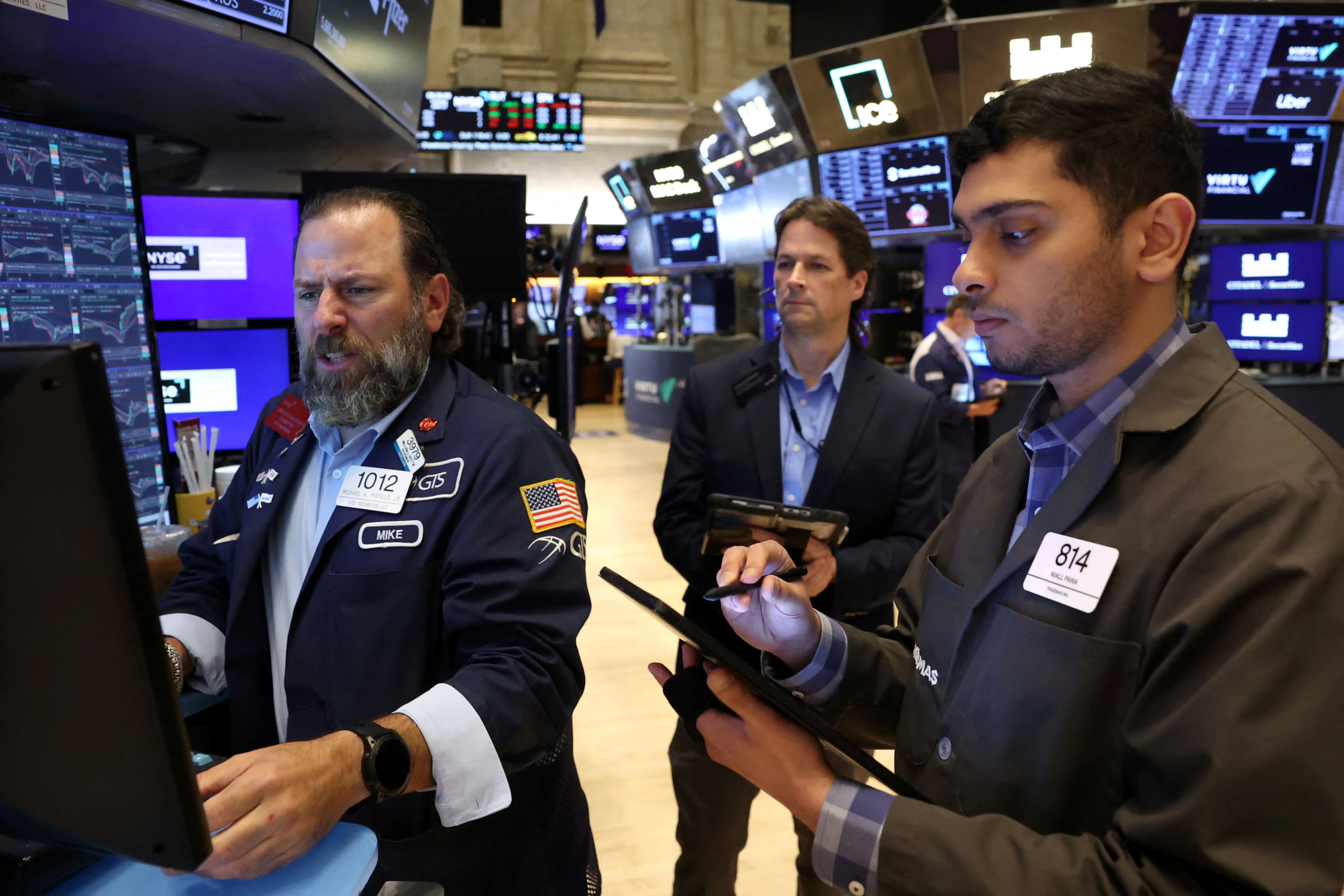Stocks slid and Bitcoin plunged to a seven-month low as investors scaled back exposure to riskier assets ahead of Nvidia Corp.’s earnings release and a closely watched US jobs report.
Global equities retreated to their weakest levels in a month. A key barometer of Asian shares dropped 2.3% and fell through its 50-day moving average for the first time since April. US equity futures pointed to more downside for the S&P 500 and Nasdaq 100 after both benchmarks slipped on Monday, while European markets also looked set for a soft start.
As risk appetite faded, government bonds caught a bid. The yield on the 10-year US Treasury dipped four basis points to 4.10%. Weak sentiment was amplified by Bitcoin, which tumbled more than 2% and briefly traded below the $90,000 mark.
“Equity indexes have been grinding lower with noticeable unease, and Bitcoin often treated as a high-beta risk sentiment barometer is tracking those moves almost exactly,” said Thomas Bureau, global co-head of FX option trading at Societe Generale SA. “That connection is adding more pressure to the market because crypto weakness is feeding the idea of tighter liquidity and fading risk tolerance.”
Across the MSCI Asia Pacific Index, nearly five stocks declined for every one that advanced. Technology names bore the brunt of the selling, with SK Hynix Inc. and Samsung Electronics Co. among the region’s underperformers. Japanese stocks and bonds also slid as markets fretted over rising domestic yields and a diplomatic rift between Tokyo and Beijing.
Longer-dated Japanese bonds were hit hardest. Yields on 40-year debt surged eight basis points to 3.68%, the highest level since the securities were first issued in 2007. Yields on 20- and 30-year bonds each climbed at least four basis points, putting the 30-year within striking distance of an all-time high.
These cross-asset swings underscored the market’s broader uncertainty around interest-rate policy and technology earnings. Nvidia’s results due Wednesday are shaping up to be a key moment for the AI trade, where valuations remain elevated. Soon after, investors will turn their attention to Thursday’s delayed September US employment report, which could influence expectations for the Federal Reserve’s next policy steps.
Elsewhere, a dollar index held on to the previous session’s gains, while gold fell for a fourth consecutive day, hovering just above $4,000 an ounce. The metal has been pressured by reduced expectations for a Fed rate cut next month, since lower interest rates typically increase the appeal of non-yielding assets like gold.
Bitcoin’s decline accelerated a broader month-long pullback that has erased the cryptocurrency’s gains for 2025 and dented confidence across the wider digital-asset landscape. The downturn has been accompanied by renewed macroeconomic concerns, including questions about the Fed’s path forward and stretched valuations in more speculative corners of the market.
“Volatility in crypto markets is bleeding into other risk assets,” said Homin Lee, senior macro strategist at Lombard Odier. “Uncertainty around the likelihood of a Fed rate cut in December is adding to the nervous tone. We’ll likely remain in this holding pattern until the September jobs data provides clearer direction. A softer labor print or a blockbuster report from Nvidia could stabilize sentiment.”
Concern is also mounting among technical analysts watching US equity charts, who warn that the latest drop could turn into a deeper market correction of 10% or more.
The S&P 500’s sharp slide on Monday widened its retreat from the October 28 record high to 3.2%. The benchmark also closed below its 50-day moving average for the first time in 139 trading sessions, marking the second-longest streak this century that it stayed above that trend line.
The Nasdaq Composite is showing similar signs of stress. John Roque, head of technical analysis at 22V Research, noted that more of the index’s roughly 3,300 components are trading at 52-week lows than at highs a signal of deteriorating market breadth and limited potential for a sustained rally.
“It’s still been a very strong year overall for investors, but nerves are clearly rising as we approach year-end,” said Nick Twidale, chief market analyst at AT Global Markets in Sydney. “Volatility could pick up again over the coming weeks as holiday-season trading conditions set in.”

Subscribe to our newsletter!
As a leading independent research provider, TradeAlgo keeps you connected from anywhere.








